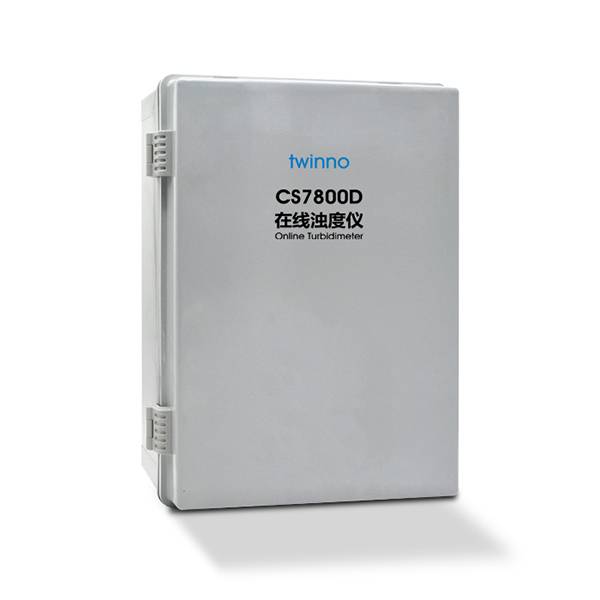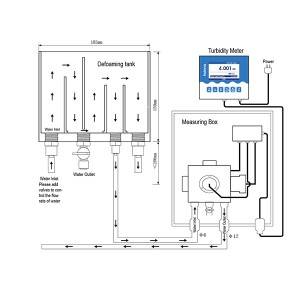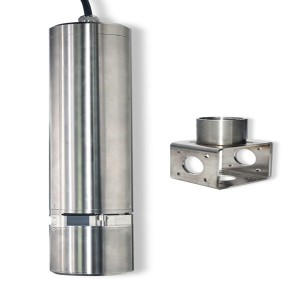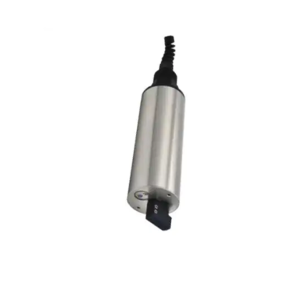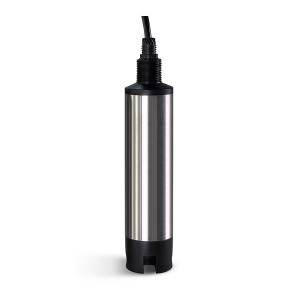
Introduction:
The principle of the turbidity sensor is based on the combined infrared absorption and scattered light method. The ISO7027 method can be used to continuously and accurately determine the turbidity value. According to ISO7027 infrared double-scattering light technology is not affected by chromaticity to determine the sludge concentration value. The self-cleaning function can be selected according to the use environment. Stable data, reliable performance; built-in self-diagnosis function to ensure accurate data; simple installation and calibration.
The electrode body is made of POM, which is corrosion-resistant and more durable. The seawater version can be plated with titanium, which also performs well under strong corrosion.
IP68 waterproof design, can be used for input measurement. Real-time online recording of Turbidity/MLSS/SS, temperature data and curves, compatible with all water quality meters of our company.
0.001-20.00NTU-200.00NTU-400NTU, a variety of measuring ranges are available, suitable for different working conditions, the measurement accuracy is less than ±5% of the measured value.
Typical application:
Turbidity monitoring of water from waterworks, water quality monitoring of municipal pipeline network; industrial process water quality monitoring, circulating cooling water, activated carbon filter effluent, membrane filtration effluent, etc.
Main features:
•This product is a circulating turbidity digital sensor, which can directly output RS485 signal.
•The internal structure can effectively eliminate water bubbles and improve the measurement accuracy and stability.
•When the outlet joint module is disassembled, the optical path lens and the inner wall of the flow groove can be cleaned, and the maintenance is more convenient.
•The internal upgrade of the sensor can effectively prevent the internal circuit from dampness and dust accumulation, and avoid damage to the internal circuit.
•The transmitted light adopts stable invisible near-monochromatic infrared light source, which avoids the interference of chroma in liquid and external visible light to sensor measurement.And built-in luminosity compensation, improve the measurement accuracy.
•The use of quartz glass lens with high light transmittance in the optical path makes the transmission and reception of infrared light waves more stable.
•Wide range, stable measurement, high precision, good reproducibility.
•Without meter, the sensor can be set online through software, from the machine address and baud rate, online calibration, restore factory, RS485 output corresponding range, modify the range, proportional coefficient and incremental compensation Settings.
Technical parameters:
|
Model No. |
CS7800D |
|
Power/Output |
9~36VDC/RS485 MODBUS RTU |
|
Measurement range |
0.001-20.00NTU-200.00NTU-400NTU |
|
Measurement mode |
90°IR scattered light method |
|
Weight |
5.0kg |
|
Housing material |
POM+316 Stainless steel |
|
Waterproof rating |
IP68 |
|
Measurement accuracy |
±5% or 0.5NTU,whichever is grater |
|
Pressure resistance |
≤0.3Mpa |
|
Measuring temperature |
0-45℃ |
|
Calibration |
Standard liquid calibration, water sample calibration |
|
Dimensions |
400×300×170mm |
|
Cable length |
Standard 10m,can be extended to 100m |
|
Installation |
wall mounting ; matching with the filter tank; |
|
Application |
General applications, municipal pipeline network; industrial process water quality monitoring, circulating cooling water, activated carbon filter effluent, membrane filtration effluent, etc. |




